Navigating the Best of Seattle Cocktail Week
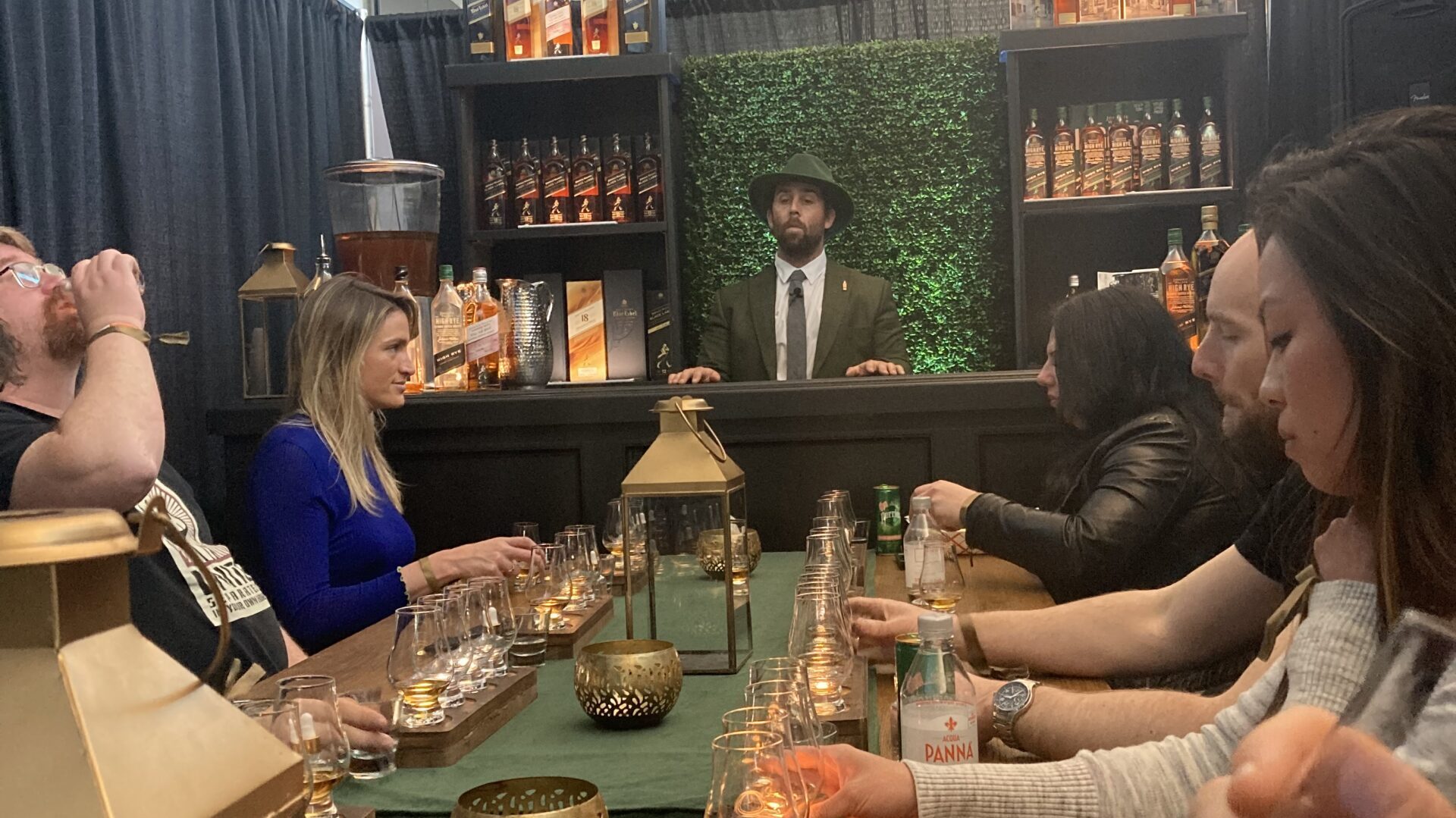
The Warmup: Bar Takeovers in Belltown
We kicked off Seattle Cocktail Week on a Tuesday with a visit to Trade Winds Tavern for some Big Buck hunting with Chris Elford and a bar takeover by the Fernside team from San Diego. Fortunately, our slow pump-action skills didn’t prevent us from scoring swag. 🙏
We tried to go to Roquette next, but a wait popped us over to Rob Roy to try their use of the portfolio from our close neighbors in the Columbia Valley Gorge, Hood River Distillers. I went with my server’s creation, a refreshing highball featuring Clear Creek Pear Brandy.
It was hard to choose because a tour of the distillery last October with the Oregon Bartenders’ Guild left us seriously impressed with both McCarthy’s Oregon Single Malt Whiskey and Timberline Vodka (who says vodka has to be odorless and flavorless), but I was happy with her highball because it didn’t cloud or cloy the fragrance and intensity that I love about this pear brandy.
At this point, we dabbled on whether going to three bars in one night might be a bit excessive, but decided to keep going like it was “Fat Tuesday.” And the bar takeover at Roquette did not disappoint!
Just in time to keep the party going, we got hit with some coffee drinks (and bar tricks) from Trick Dog’s bartenders, up from San Francisco. Okay, two things:
- Holy heck, Mr. Black Cold Brew Coffee Liquor is just better! We really discovered this in full during their tasting at the summit the next day…
- As bartenders, we’ve worked with cold brew and coffee liquors several times. Coffee is a strong flavor, and it tends to overpower other ingredients, but all the drinks on Trick Dog’s menu tasted distinctly different and were well-balanced.
Bravo Trick Dog, and thanks for the smoke show! 🔥
The Bartender’s Circle Summit: Day 1
Coronavirus forced the 2020 Seattle Cocktail Week to cancel without much notice. As we’ve come through the horribleness of the past two years, it felt a little titillating walking to the Bell Harbour Conference Center to attend day one of the Bartender’s Circle Summit. Seriously, what’s a conference center?!
The morning got off on the right foot when they carded us at the door – a sign of good things to come.
I was a little surprised at first because drinking wasn’t what I had on my mind at 9 o’clock in the morning, but the doorman said, “we are carding everyone this morning. Liquor control is literally in the house.” This took us directly to our first session of the morning, a Q&A with the Washington State Liquor and Cannabis Board.
Tastings, tastings and
more tastings!
The breakout sessions were well-sponsored and provided opportunity for refreshments. The sessions featured heavily on product information, but from respectable purveyors with dedication to quality. Their presentations helped expand our knowledge of what processes create distinctions between brands.
Staying Compliant
Jennifer Dzubay, Captain, Washington State Liquor and Cannabis Board
Robert Rieder, Lieutenant, Washington State Liquor and Cannabis Board
Victor Hopkins, Lieutenant, Washington State Liquor and Cannabis Board
Anu Apte, Co-Owner, Canoe Ventures (Moderator)
Can bartenders make cocktails with CBD?
No, the state has not approved CBD to be used in food and beverage products sold in retail stores. It is happening, but illegally. For example, CBD soda is not a legal product and should not be sold. Currently, the Washington State Liquor and Cannabis Board (WSLCB) is not going to enforce the soda, but they will enforce it if an establishment mixes it with alcohol.
Many cocktail bars pre-batch cocktails to get drinks out faster. Is that okay?
Yes, provided the pre-batched cocktails are sold the same day. When alcohol is stored, the ABV can change. The same goes for barrel aged cocktails.
Along those same lines, according to the WSLCB, infusing liquor is considered manufacturing. Day of infusions are okay, but technically anything longer is not.
We inquired if a Manufacturing License could be obtained as a workaround to this and they said this type of license is not hard to get, but manufacturers cannot sell to the public.
What are the WSLCB’s plans to modernize MAST permits?
The WSLCB has a system modernization project for both the MAST permit and liquor licensing process, but the system just keeps getting delayed. Jennifer said if they were private, “she would probably be fired, but since they are not…”
Anu said at her establishments, they keep a binder with copies of her employees’ MAST Permits. Victor says he encourages employers to do that because when they come in, then they don’t have to be as disruptive when they check employee permits, and the staff can keep working.
We mentioned that technically the law says you must have a physical permit and Jennifer admitted that some agents might require a physical permit. She said that the WSLCB has an online form to submit complaints (a.k.a. “suggestions”).
Each year the director asks staff to suggest a WAC that could use revision, one that is confusing for both WSLCB staff and people. They look for something that needs more clarification and they do try and push it forward. Last year they worked on two.
The New Age of Non-Proof
Derek Brown, Director of Education, Spiritless
Non-alcoholic cocktails are something that people are interested in. They are growing in popularity. Consequently, Derek said, “I am not advocating that you serve non-alcoholic drinks, but that you serve people.”
“Sales of non-alcoholic spirits were up 290% on Drizly last year.”
– Kirk Miller, Managing Editor, Inside Hook
What are non-alcoholic spirits? They are water. But they fall into two types.
- Compounded – a pre-made drink. Some need refrigerated and only last a few months.
- Distilled – a non-alcoholic spirit. The distillation process was not created for alcohol, it just works magically with alcohol. So, there are some non-alcoholic products that are made with this process.
There are many ways to distill a non-alcoholic spirit. Spiritless starts with a full-proof neutral grain spirit and adds three types of oak. Through heat modulation, they make a tea-like infusion. Once its cooled, they begin the process of “reverse distillation”. They distill off the alcohol and are left with an intensely flavored liquid. Then, they blend and sometimes add in a tiny bit (less that 5%) alcohol back into it. That is less than some bread and about the same amount as a ripe banana.
People have tried non-alcoholic spirits and then immediately rejected them. Just like some people have tasted tequila and then immediately decided they don’t like it. But with each non-alcoholic spirit, we need to ask, how is the product meant to be used?
Spiritless Kentucky 74 does not taste just like bourbon, and it is not made to be drunk neat. It is made to be used to create non-alcoholic cocktails. It can also be used to cut down on alcohol content by going “halfsies.” This allows full flavor without going full alcohol (also less calories)!
Spiritless Old Fashioned
2 oz Spiritless Kentucky 74
1/4 oz Simple Syrup
3 Dashes Fee Brothers Old Fashioned Aromatic Bitters
Garnish with Orange Peel
When making sours, Derek relies on salt tinctures. When he was looking back at temperance books, they used salt and eggs a lot. Instead of eggs he prefers aquafaba (a.k.a. chickpea water) due to the quality of the foam. Using ginger and apple cider vinegar with lemon can also help create bite.
Most non-alcoholic spirits are just slightly more expensive than their alcoholic counterpart. But there is good reason for this. The distiller at Damrak, said it took her two years to develop Damrak Virgin. In the end, it undergoes more distillations than their regular gin.
“People won’t pay $12 for basically flavored water.” In 2003, people said the exact same thing about cocktails. But bartenders decided, if it costs that much, we are charging that much. They reasoned, if people want cheap drinks, they can get that at home, but if they want a good product in a nice environment, and they want it served to them, then they will be willing to pay.
At the end of the day, we are making great cocktails, and we are taking care of people. It’s about choices and how people want to feel.
Derek said, “I love the idea that you can go into a bar, have an alcoholic drink, have a halfsies and then have a non-alcoholic drink. You can have all three, be social and be able to control how you feel. It’s awesome to be with other people and have a high-quality connection. All you need is the right people, the right environment, the right experience, and you can have an amazing time.”
Beyond Espadín: The Real World of Mezcal
Eric Zimmerman, National Sales Manager, 3 Badge Beverage Corp
When this session started, we didn’t think we would be tasting mezcal with donuts. To our delight, the pairings proved helpful in understanding the variances of each spirit. Halfway in, we started to go glazy but managed to get the highpoints as follows.
Last year, Mexico produced over eight million liters of mezcal. Almost five million liters came to the U.S.
About 90% of mezcal is produced from the Espadín species of maguey, with about two out of 10 plants reaching maturity.
Mezcal production:
- 12% Industrial – large manufacturers that turn it and burn it. It’s crap – don’t buy.
- 86% Artisanal – copper pot, and sometimes stainless steel.
- 2% Ancestral – clay pot. Typically, they last 5-10 months before they break. Very small batches.
Mezcal is the closest spirit to wine:
- Maguey species are similar to grape varietals (90 magueys are recognized by Consejo Regulador del Mezcal (CRM)).
- Similar to grapes, each maguey takes on the terroir of the microclimate in which it grows, impacting a mezcal’s flavor (10 states are recognized by the CRM).
- Both are classified by batch and vintage.
Palenques = Wineries
Maestros = Winemakers
There is so much diversity in the different species of agave. There is a huge variance with the size of some of these species, as well as different colorations.
Tasting notes on 3 Badge Beverage Corp’s mezcals:
- Bozal Ensamble – mild and approachable.
- Cenizo – rapid fermentation process. A bit of a funky flavor. Smoke is lacking. You get some citrus and floral. Paired it with a lemon donut.
- Tepeztate – fruity, floral, citrus. Not as smokey, as well. Paired it with a raspberry donut.
- Bozal Cuishe – mineral, sweet, citrus. The fibers are denser. Doesn’t take as long to cook so you don’t get as much of the smoke.
- Bozal Castilla – ancestral…scotch notes. If Macallan and Laphroaig went to Mexico and had a party. Clay pot distillation really enhances the minerality. Paired it with a chocolate donut.
- Bozal Jabalí – pepper notes, green, vegetal. Also paired it with a chocolate donut.
Demystifying the Mash
Lynn House, National Brand Educator, Heaven Hills Distillery
Next, we moved on to a whiskey tasting paired with bread. These brand ambassadors sure know how to keep the carbs coming.
Lynn said, “It starts with the ‘mashville’ – the grain.” Whiskey is basically distilled bread. The first grains were barley, wheat and rye. Then, we see corn.
She started us out with a tasting just of the bread to compare flavor profiles.
Whole Grain Bread Tasting:
- Barley Bread: yeasty, biscuity, sticking, cloying (a.k.a. Irish soda bread).
- Wheat Bread: nutty, sweeter, a very dry grain.
- Rye Bread: nutty, earthy, malty, sour.
- Corn Bread: sweet, buttery, creamy (a dramatically different grain).
Tasting Lineup from Heaven Hills Distillery
Then we moved on to tasting the whiskeys and reviewing their mash bills, or the grain combination used to make each spirit.
Whiskey Mash Bills:
- Bernheim Wheat Whiskey (51% wheat, 35% corn, 12% barley): soft, easy. There are only a handful of wheat whiskies out there.
- Larceny Bourbon (68% corn, 20% wheat, 12% barley): 92 proof.
- Elijah Craig Bourbon (78% corn, 12% barley, 10% rye): It’s a traditional American bourbon. 94 proof. Getting oilier…
- Mellow Corn (at least 80% corn): distinctly different. Popcorn on crack. The bartender’s handshake. Great for boilermakers.
- Rittenhouse Rye (51% rye, 35% corn, 14% barley): noticed its oiliness, viscosity, and spice. Rye is great for spirit-forward cocktails.
Exploring Amaro
Jamie Hunt, Founder & CEO, Fast Penny Spirits
Holly Robinson, Co-Founder, Fast Penny Spirits
The dynamic duo leading this woman-owned business kicked off the session by delving into the rich history of amaro:
- Amaro means “bitter” in Italian. An amaro must be bitter and sweet. It has to have botanicals and herbs. It can be wine or spirit based. It is macerated, then typically filtered. Filtering can reduce flavor. Amaros have varying percentages of alcohol or sugars.
- They were used medicinally for centuries.
- Amaro dates back to ancient Rome. Nobles would go on drinking binges and then treat themselves to wine infused with botanicals. They viewed it as a hangover cure and used it for its health benefits.
- Arab missionaries brought wine distillation techniques through Sicily in the Middle Ages.
- Ramazotti says it was the first to do a distilled based amaro in the 1800s.
Jamie and Holly said you should think of them as master blenders instead of master distillers. When making their amaro, they selected ingredients based on health benefits, flavor, color and sustainability. When developing processes, they found that tincturing has more consistency than maceration.
After blending, they do a fine filtration to get a richer mouth feel. Filtering typically reduces flavor, so they increase botanicals beforehand to compensate.
The final product has a lower sugar level and a higher alcohol content of 33%, proudly excluding preservatives and additives while using fair trade sugar. As a bonus, it ages gracefully in the bottle – the longer it sits, the better it gets!
“Amaro is a gateway spirit to thoughtful drinking.”
– Holly Robinson, Co-Founder, Fast Penny
As business owners, Jamie and Holly are incredibly conscientious. They allocate 3% of bottle sales to nonprofits and hold B-Corp certification, an international designation signifying adherence to high standards for corporate social responsibility.
At the end of their presentation, I was reminded of our tour of Freeland Spirits with the Oregon Bartenders’ Guild. There is something genuine and thoughtful about the women-owned businesses we have encountered in the industry.
Good people. Outstanding product.
A Bartender’s Guide to Better Coffee
Stephen Kurpinsky, National Brand Ambassador, Mr. Black
75% of Americans probably drink coffee every day, but don’t necessarily think about where it comes from. The story of coffee traces back to tropical Africa (specifically Ethiopia) in the 13th century, where its discovery is commonly credited to a goat-herder named Kaldi. He noticed his goats eating cherries and then jumping around, which led to steeping.
Coffee first arrived in North America during the colonial period, but really took hold after the Boston Tea Party in 1773. Colonists’ rejection of the crown and its oppressive taxes on tea contributed to the rise of coffee’s popularity as an alternative beverage.
“Tea must be universally renounced. I must be weaned, and the sooner, the better.”
– John Adams
Mr. Black is made with 100% arabica coffee and has a vodka base. An ounce of Mr. Black has about one-third the caffeine as a shot of espresso. The acidity is very low so it can be paired with citrus. It also goes well with beets, tropical fruit, nuts, grains and smokey profiles.
On its own, Mr. Black is bold and smooth. At the bar takeover at Roquette, we got to see Trick Dog’s presentation of how well it works in cocktails. Overall, we were “brew-tally” impressed.
The Bartender’s Circle Summit: Day 2
To be totally transparent, we get stupid excited about freebies. Who doesn’t?!? The Bartender’s Circle Summit was the gift that kept on giving because as the day went on, the swag kept getting better.
Our liquor sock portfolio just keeps increasing, but we were also pleasantly surprised that lunch was included, as well as plenty of non-alcoholic refreshments to help keep us hydrated.
The Magic of the Barrel: El Tesoro Tequila and Laphroaig
Luis Navarro, Senior Ambassador, El Tesoro
Pete Galbraith, Key Account Manager, Beam Suntory
El Tesoro’s Process
El Tesoro farms their own blue agave in highland soil. They wait for the agave to reach peak maturity and then they hand harvest. After steaming, they crush the agave (as opposed to shredding) with a volcanic stone wheel known as a tahona and allow for open-air fermentation. Lastly, they distill their tequila twice, directly to proof, to avoid adding back water.
Laphroaig’s Process
Laphroaig means the “hallow by the bay.” Set by the sea, it is very much influenced by the elements of nature. The location adds characteristics of the sea air, seaweed and minerality.
Laphroaig is one of the few distilleries that still hand cuts peat and hand rakes all their malted barley. Taking their time in the early stages of the floor malting process helps keep the enzymes alive.
Laphroaig is the top-selling Islay scotch in the world, and they only have 34 total employees (17 travel and 17 work out of the distillery).
El Tesoro and Laphroaig’s Shared Values
El Tesoro partnered with Laphroaig because they both share a commitment to keeping traditional methods alive in their processes. Their distillers are like-minded and bring a similar level of care to their craft.
It’s hard to innovate with tequila because it’s probably the most regulated spirit in the world. However, in this partnership, El Tesoro managed to create a truly distinctive tequila.
El Tesoro’s 2021 Mundial Collection is aged for three months in Laphroaig 10-Year Scotch Whiskey casks. Only 35 barrels were produced. It is creamy and buttery, but also salty and mineral with a subtle hint of smoke at the end. El Tesoro 2022 Mundial will be aged for 12 months in Laphroaig barrels.
El Tesoro’s Mundial Laphroaig Edition
It’s all the things I love about tequila and scotch in one bottle… and at the end of the session, it was a little painful to watch the staff toss the leftover samples.
The History of Quinquina
Zac Overman, Owner and Beverage Director, L’Oursin
Jake Parrott, Aromatized Wine and Spirits Portfolio Manager, Haus Alpenz
Jake (The Rise of Quinine):
Jake kicked off the session with a little history of quinquina.
Quinine is an extractive of the bark of the cinchona tree. It was first discovered as “useful” by the Quechua people, native to Peru and Bolivia.
Imported to Europe by the 1600s, it didn’t become a craze until the late 1800s. Viewed as a desired botanical and sold in pharmacies, it was blended with grapes for a low production cost. It gradually became an identity product for regions as they started incorporating local ingredients and imagery.
As a beverage, its known as quinquina in France and chinato in Italy. It has a dry spice character that hits in the back of the throat, as opposed to an americano that tends to be a bit sweeter because well, Italians tend to prefer sweet and let’s face it, Corsica is full of bitter old men. 😂
“What americano was to Italy, quinquina was to France.”
– Jake Parrott, Portfolio Manager, Hauz Alpenz
Zac (Using Quinquina at L’Oursin):
Oui, L’Oursin is a French restaurant. The thing that they love abut quinquina is that, in many respects, it checks the boxes of amaro. With a mineral-driven and acidic profile, it imparts earthiness and fruit notes as a base flavor or accent.
Quinquina packs a twofold punch as it makes your guests less drunk and more hungry. Zac says you can use quinquina to create low ABV cocktails or you can sneak it into high-proof cocktails. Considered an aperitif, it’s perfect for happy hour because it won’t get your customers hammered and its bitterness will keep them digesting.
He recommends serving it neat, on the rocks or in richer cocktails to pair it with salty bar snacks, cheese and charcuterie. Alternatively, it can be used in lighter, spritzy drinks to cut through fattier, dry foods.
But here is the part he got really excited about. Being wine based, it falls below the ABV threshold for Washington State liquor tax. That’s right, no liquor tax!!!
“No liquor tax!”
– Zac Overman, Owner and Beverage Director, L’Oursin
Zac continued, “Vermouth is a happy puppy that is going to get along with whatever you pair it with. Quinquina is a bit more complex and requires more trial and error. It’s going to act out a bit more” as it has more tertiary flavors that will come into play.
Here are a few pointers to help you work quinquina into your cocktails.
- Mattei Cap Corse Rouge – It can make drinks that are long without being light. It gets you ready for dinner.
- Byrrh Grand Quinquina – It’s the most iconic quinquina. The base is a combination of port-like wine and mistelle (unfermented grape juice fortified with alcohol). Pair it with blue cheese, or any cheese really.
- Bonal Gentiane-Quina – It bridges the categories because it is both gentian and quinine. If you think about the alps, it was a winter warmer. Ice and lemon peel is the simplest way to drink this. Alternatively, try using it in a Manhattan instead of vermouth.
In summary:
- Quinquina is not vermouth!
- Quinine is a very dry, spice character.
- Quinquinas were local expressions.
- In quinquinas with a mistelle base, the mistelle gives juiciness and acidity, but not aroma.
- It’s affordable.
“The answer to how to serve quinquina is, ‘yes.’“
– Zac Overman, Owner and Beverage Director, L’Oursin
Bitter in the Tropics
Tad Carducci, Director of Outreach and Engagement, Gruppo Montenegro
Jen Akin, Cocktail and Spirits Expert, Formerly Rumba and Inside Passage
Chris Elford, Cocktail and Spirits Expert, Navy Strength
I have failed this blog post because I did not get a picture of these three in their costumes!!! 🦈 🏴☠️ Two pirates and a shark aside, this session explored how and when tropical ingredients wove themselves into Italian aperitivos.
Tad:
Typically, aperitivos are drunk to stimulate the appetite. They stimulate the appetite because when we drink something bitter, our body starts a warning and that says, ‘hey, we need to get rid of this.’ But when we drink something just a little bit bitter… that’s where the magic happens.
The products featured in this session were Select Aperitivo and Amaro Montenegro. We got a little history on both.
In the post-war Venice of 1920, the Pilla Brothers created Select Aperitivo, which then became a rival to Aperol.
Montenegro’s history extends to 1885 in Bologna, Italy. Stanisalo Cobianchi abandoned his family’s wish for him to join the church for a tawdry adventure traveling to collect the world’s finest botanicals. Tad described it as, “getting laid while looking for botanicals.”
As it turns out, sex sells because well over a 100 years later, Amaro Montenegro is still popular and culturally significant.
Jen:
Tiki has no definition of what it actually is. Jen defines it as, “just layers of flavor.” Many classic tiki cocktail recipes have a dash of bitters in them. Instead of adding a few drops of Angostura, she likes to add an ounce of something else bitter – a bitter liqueur. Who cares!
Chris:
The original idea of Tiki was this white, colonized version. Tiki bars were originally all white table restaurants and Tiki drinks were typically very sweet. Now, we have more ideas of what it can be. How we approach escapism, the idea of taking you somewhere you are not currently, has had on impact on Tiki’s evolution.
Pina Old Fashioned (a.k.a. The Three Card “Monte”)
Yes, you can make a tropical drink without 20 ingredients.
0.75 oz Stiggins’ Pineapple Rum
1.25 oz Amaro Montenegro
2 dashes Tiki Bitters
Seekers of the Serpent’s Eyes
Somehow related to Mandy, the role that Nicolas Cage was meant to play.
1 oz Select Apertivo
0.5 oz Lime Juice
0.75 oz Grapefruit
1.5 oz Juniper Raspberry Cordial (made with Perfect Puree Raspberry and gin)
1 Smoked Lime Wheel (easy to make 200 at a time)
Mandarin Jungle Bird (a play on the cocktail everybody knows)
Another bitter, bright red aperitivo, but with Cutty instead of rum.
1.5 oz Select Apertivo
0.5 oz Pineapple Juice
0.5 Blitzed Mandarin Juice (blitzed a whole mandarin in a blender to give it a creamsicle aspect)
0.5 oz Cutty Sark (to play up the caramel flavor)
0.25 Lime Juice
1 dash Vanilla Extract
Chai Red Wedding (a.k.a. Bartender Catnip, according to Chris)
Rifted from a drink called the Red Wedding from Rumba.
1.0 oz Reposado Tequila
0.5 oz Mezcal
0.75 oz Amaro Montenegro
……Vanilla Chai (or Chocolate Chai)
And a little bit of orgeat and lemon…
“A good drink is a drink that has a concept. An excellent drink is a drink that has a narrative. Don’t tell me where you don’t want to go. Tell me where you do want to go.”
– Chris Elford, Cocktail and Spirits Expert, Navy Strength
Cocktail Bitters Masterclass
Benjamin Sheffield, Brand Ambassador, Scrappy’s Bitters
In 2006, founder Miles Thomas was bartending in Seattle. He noticed the only thing you could get was Angostura, Peychaud’s and Regans’. So, he started out on a mission…
What makes bitters work? In order for them to work, they need to be strong! Scrappy’s products are concentrated. That’s one part of the name. Another part is Miles’ reputation. He was a *little* bit of a bar brawler.
Scrappy’s only uses organic ingredients and fresh fruit. A lot of bitters do not use clear glass, but Scrappy’s does to show the coloration from natural ingredients.
Everything is made in small batches and macerated for a minimum of 30 days, then blended and filtered to be consistent. Outside of the fresh fruit, each product has a unique blend of fresh herbs that complement the main ingredient.
We got to do a tasting of their Orange, Chocolate, Fire Tincture and Aromatic Bitters, along with sizeable samples to take home.
We also got some pointers on how to use their other bitters:
Cardamon Bitters – can be used in baking.
Spice Plantation Bitters – is made for the Singapore Sling.
Celery Bitters – can be used in anything gin based. Recommended for aquavit drinks too. A sneaky dash of celery bitters in a margarita adds a note of umaminess and makes the drink pop.
Unfortunately, they had to discontinue their Sassafras Bitters because it had the components to create MDMA. But not to worry, there is still plenty of Lavender, Seville Orange and Black Lemon to go around. 😉
A Distillery Tour with Fast Penny
On Friday, we headed up to North Queen Anne for a tour of Fast Penny’s “distillery,” and what a treat that was. Although the tour was fully booked, Holly Robinson said we should ‘come anyway’ after her presentation at the summit. At this point, my girl crush was completely solidified.
Rather than distill a spirit, Fast Penny macerates an existing spirit. Fast Penny’s Americano and Bianca Americano boast a rich blend of 46 organic and wild-crafted ingredients. Thoughtfully sourced, these ingredients include West Coast grapes, cocoa nibs, Rainier cherries, Yakima hops and locally foraged truffles.
Although we learned a lot about amaro at the session on Wednesday, our tour guide shared some light touches on the background of Fast Penny. Coming from a corporate background as a digital consultant, co-founder Jamie Hunt signed up for a burlesque class with a girlfriend thinking it would be a fun workout type activity.
It turned out to be more serious than she thought, but also very empowering. During the class they had to develop their own personas. Hunt’s stage name was Veloce von Perla (“veloce” means “fast” in Italian); her partner was called Centime Bijou, centime being an old French coin. Together, they spelled Fast Penny!
Fast Penny’s attention to detail is what garnered their spirits gold medals within their first year of opening, but given Robinson and Hunt’s marketing backgrounds, it’s no surprise that the details extend beyond the sip.
If you turn a bottle of their Americano around and peer through the velvety brew, you’ll notice the lush shape of a women on the back of the label. A fitting figure for this women-owned distillery.
The Carnival of Cocktails
Spoken with the same feeling as Templeton from Charlotte’s Web, the Carnival of Cocktails was “a veritable smorgasbord-orgasbord-orgasbord” of delights to tease the ears, eyes, nose and mouth.
After taking in the sights, we decided to attend one of the educational seminars, a presentation on the Bolivian spirit Singani 63 by Sarah Soderbergh, Steve Soderbergh’s daughter.
She explained that Singani is not a pisco. Pisco can be from Peru or from Chili, but Singani comes from a 20,000 sq mile growing region in Bolivia. Just for some perspective, Champagne has a 70,000 sq mile growing region.
While filming in Bolivia, Steve spent six months drinking the local spirit. Later he formed a partnership with Casa Real Distillery and together they were able to bring Singani 63 to the U.S. and U.K.
We showed up hydrated, well fed and well rested. We paced ourselves and hit two food trucks in between tastings. With extra tasting tokens leftover, the Carnival of Cocktails flattened us.
There is a lot that can be said about our trip home, but we will spare you the details. Maybe it is best not to combine raw oysters with the cough-drop-like flavor of Opal Icelandic Liqueur. Maybe next year you will see us volunteering instead. 😂
An Interesting New Sponsor: Poached Shifts
We heard about Poached Shifts for the first time at Seattle Cocktail Week and thought they deserve a shout out.
Their national job platform provides an avenue for employers to not only advertise full-time positions but also post individual and temporary shifts, offering unparalleled flexibility in staffing solutions.
This flexibility benefits employers by ensuring they remain fully staffed and meet new workers, while allowing workers to generate extra income through temporary shifts.
Poached Shifts goes beyond traditional hiring platforms by covering insurance and facilitating payments to employees as vendor 1099s, streamlining the employment process and fostering a mutually beneficial relationship between employers and workers.
My Final Thoughts on Seattle Cocktail Week
At the Bartender’s Circle Summit, it was great to learn spirit history from the charismatic brand ambassadors, but next year, we’d be interested in hearing from a few more bar owners and industry professionals to foster more of a peer-to-peer learning environment. Maybe it was a little too soon to talk about what the pandemic taught us (what worked versus what didn’t). 🤷♀️
At the Carnival of Cocktails, could some of the exhibitors offer small food pairings with their pours? A little food goes a long way when you’re drinking. 🙏
Overall, the event was thoughtfully organized and impeccably executed by what seemed like an *almost* all woman team. This was entirely apropos considering Seattle Cocktail Week kicks off at the beginning of Women’s History Month.
Sis, you doin’ a good job!
We’d like to send A BIG THANK YOU to the organizers that we worked with, Amy Faulkner and Abigail Gullo, as well as all the many volunteers that touched Seattle Cocktail Week!
Did you enjoy this article? Check out our other related posts!
LEARN MORE ABOUT
CRAFT SERVING
View Our Online Course
WASHINGTON
MAST PERMIT COURSE
This online course is approved by the Washington State Liquor & Cannabis Board (WSLCB).
Come Socialize With Us
Thanks for checking out this article! If you found it helpful, feel free to share it or leave us a comment.
Below are links to some of our other Alcohol Server Education related news posts. Check them out and be sure to let us know if there is a topic you are interested in learning more about. We will try and cover it in our next news update!
Sarah Travis
Co-Founder and Bon Vivant
Craft Serving, LLC
Don’t be a stranger:
+ Instagram: https://www.instagram.com/craftserving
+ Facebook: https://www.facebook.com/craftserving
+ LinkedIn: https://www.linkedin.com/company/craft-serving
+ Twitter: https://twitter.com/craftserving
+ Website: www.craftserving.com
+ Email: [email protected]
OTHER NEWS
New Alcohol Delivery Rules in Washington
TIMELINE OF ALCOHOL DELIVERY IN WASHINGTON In 2020, COVID pandemic shutdowns brought about major hardships for the food the beverage industry. In response, the Washington State Liquor & Cannabis Board (WSLCB) temporarily loosened restrictions and allowed...
Tips to Help Bartenders Execute Successful Pop-Ups
Photo by Erin Schaeferle for Rémy Cointreau At the 2023 Bartender’s Circle Summit in Seattle, WA, Chris Elford had some great advice for bartenders interested in launching a pop-up. Here is a summary of some of the key takeaways. WHY SHOULD YOU USE POP-UPS TO MARKET...
The Top 5 National Events for Bartenders
Photo Courtesy of Caitlyn Ridenour for Camp Runamok WHY SHOULD BARTENDERS CONSIDER ATTENDING EVENTS? If you love bartending as much as we do, then you are probably looking for ways to continue growing in your field. Events for bartenders are a great way to stay on top...
Renew Your MAST Permit With Craft Serving
HAS IT BEEN FIVE YEARS? Let’s cut to the chase and assume that you already used our MAST Permit Checker to lookup the status of your MAST Permit. Either you discovered that your MAST Permit is about to expire or that it has already expired (whoops 😬). You know what...
Free Resources for Restaurant Workers
THE RESTAURANT INDUSTRY Prior to the pandemic, the foodservice and restaurant industry was the Nation’s second-largest private-sector employer, providing jobs for 10% of the total U.S. workforce. Restaurants struggled financially during the pandemic but innovated and...
Finding the Best MAST Class for You
THREE TYPES OF MAST CLASS PROVIDERS For many of the online MAST class providers, it’s difficult, if not impossible to find out who owns the company or even, where the company is located. The good news is, we’ve done the research, so you don’t have to. From the...
Help for Technical Issues
A Troubleshooting Guide We have done our best to make our website compatible with all devices and browsers, but sometimes user settings or other unknowns can cause issues. Our local team of customer service representatives are quick to respond to inquiries during...
Which States Require Mandatory Alcohol Server Training?
What is Alcohol Server Training? Alcohol server training teaches business owners, managers, bartenders and servers about responsible serving practices. At a minimum, it typically covers the following four areas of education: State liquor laws Identifying intoxicated...
Press Release: New RBS Training Provider in California!
Craft Serving is the newest RBS Training course provider in California! As such, it’s online course is modern, relevant and user-friendly.
Do I Need a MAST Permit to Work an Event?
Did you volunteer to serve wine at an upcoming, local fundraiser? Or maybe you just got asked to pour drinks at your friend’s wedding. If you plan on serving alcohol at an event, you may be wondering if you need to get a MAST Permit. In Washington, whether you are...

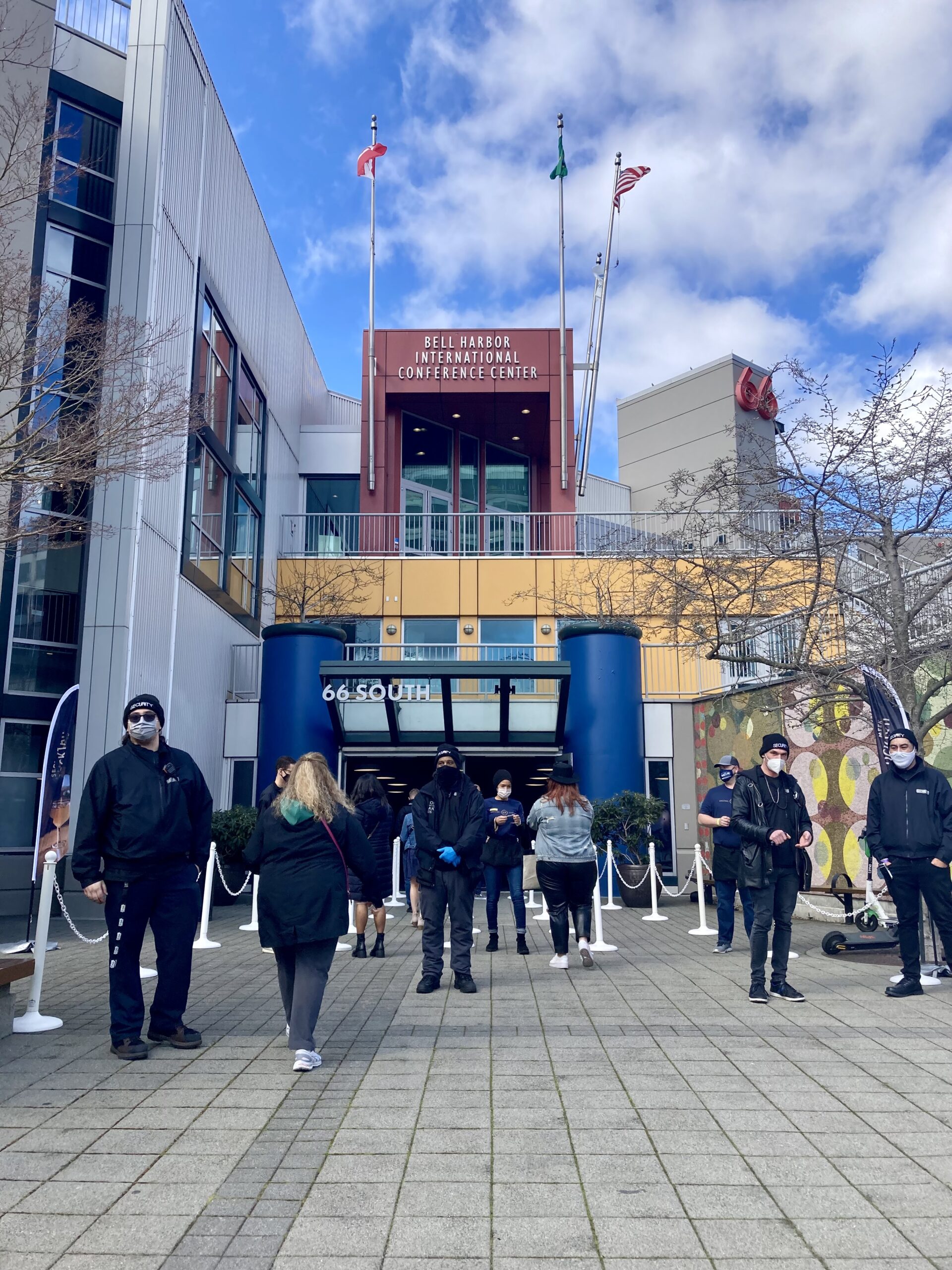
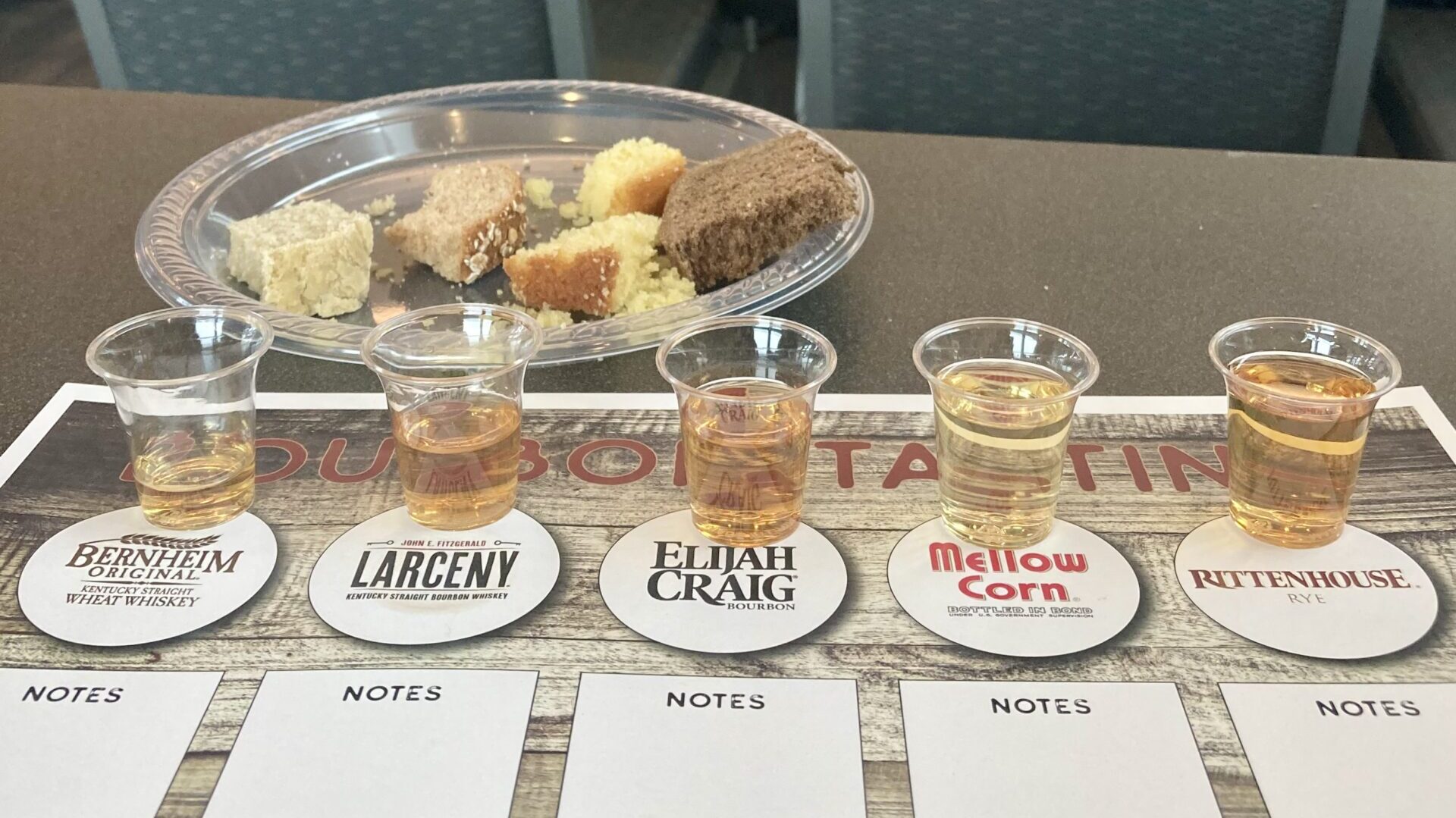
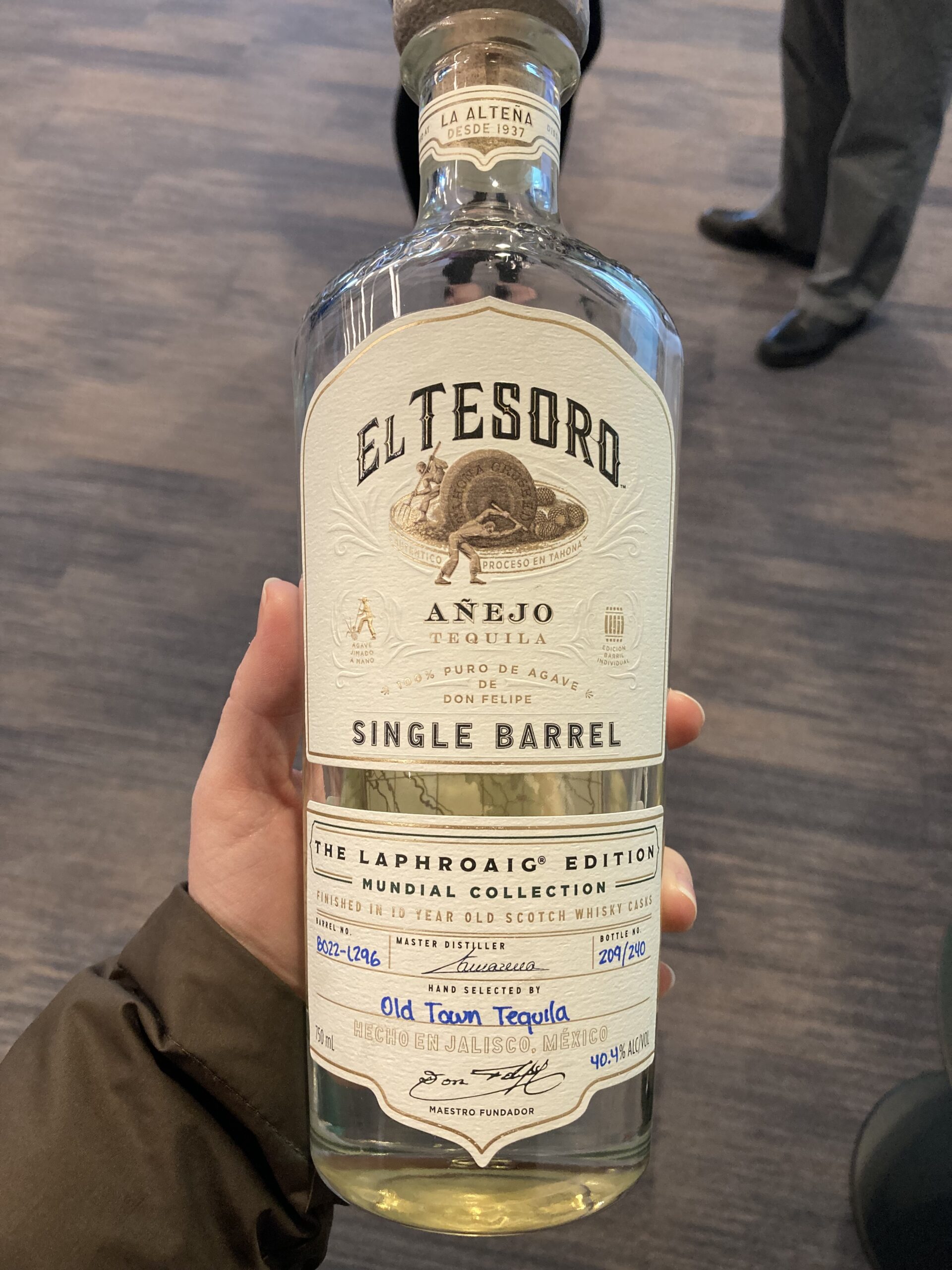
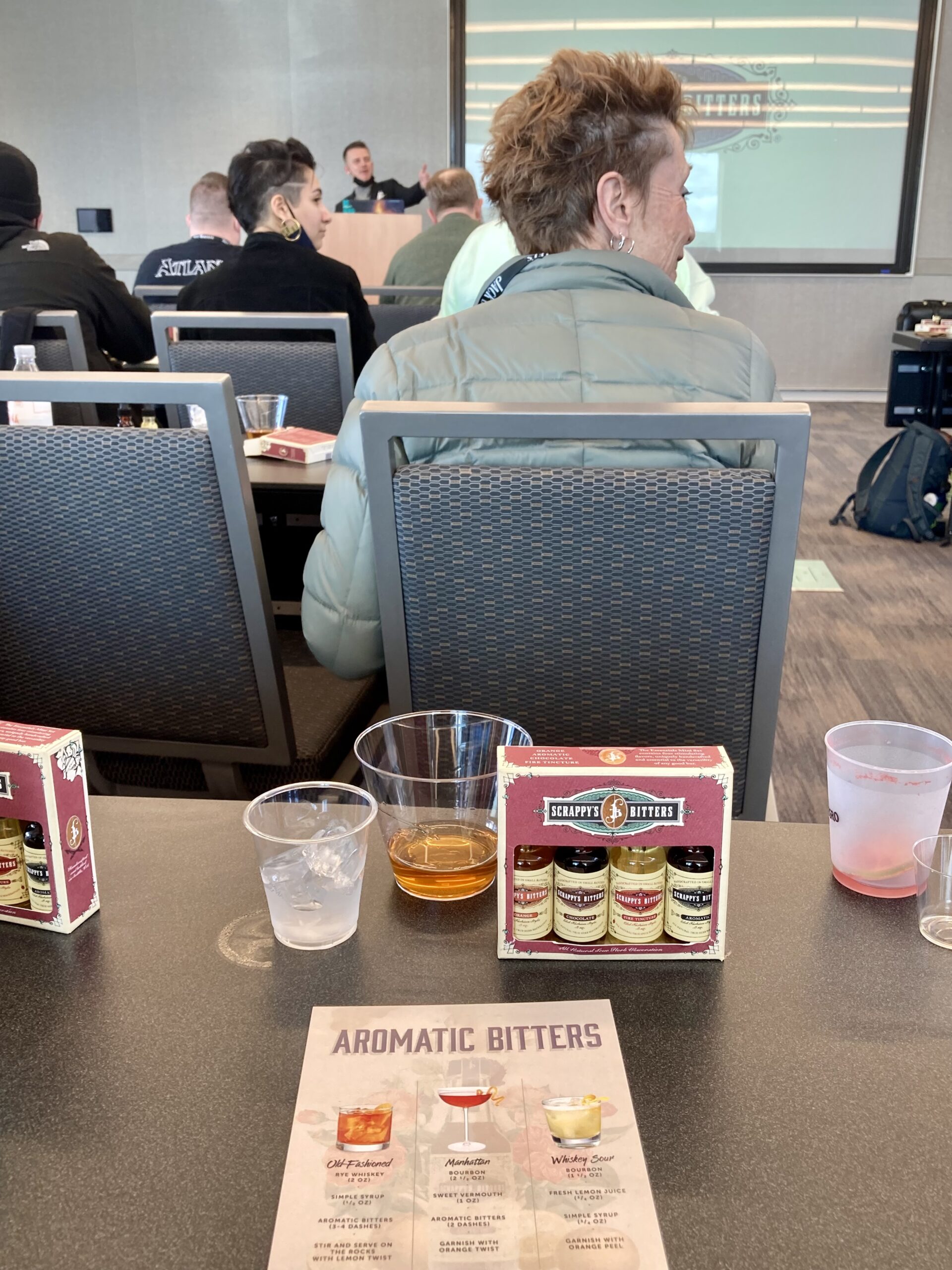

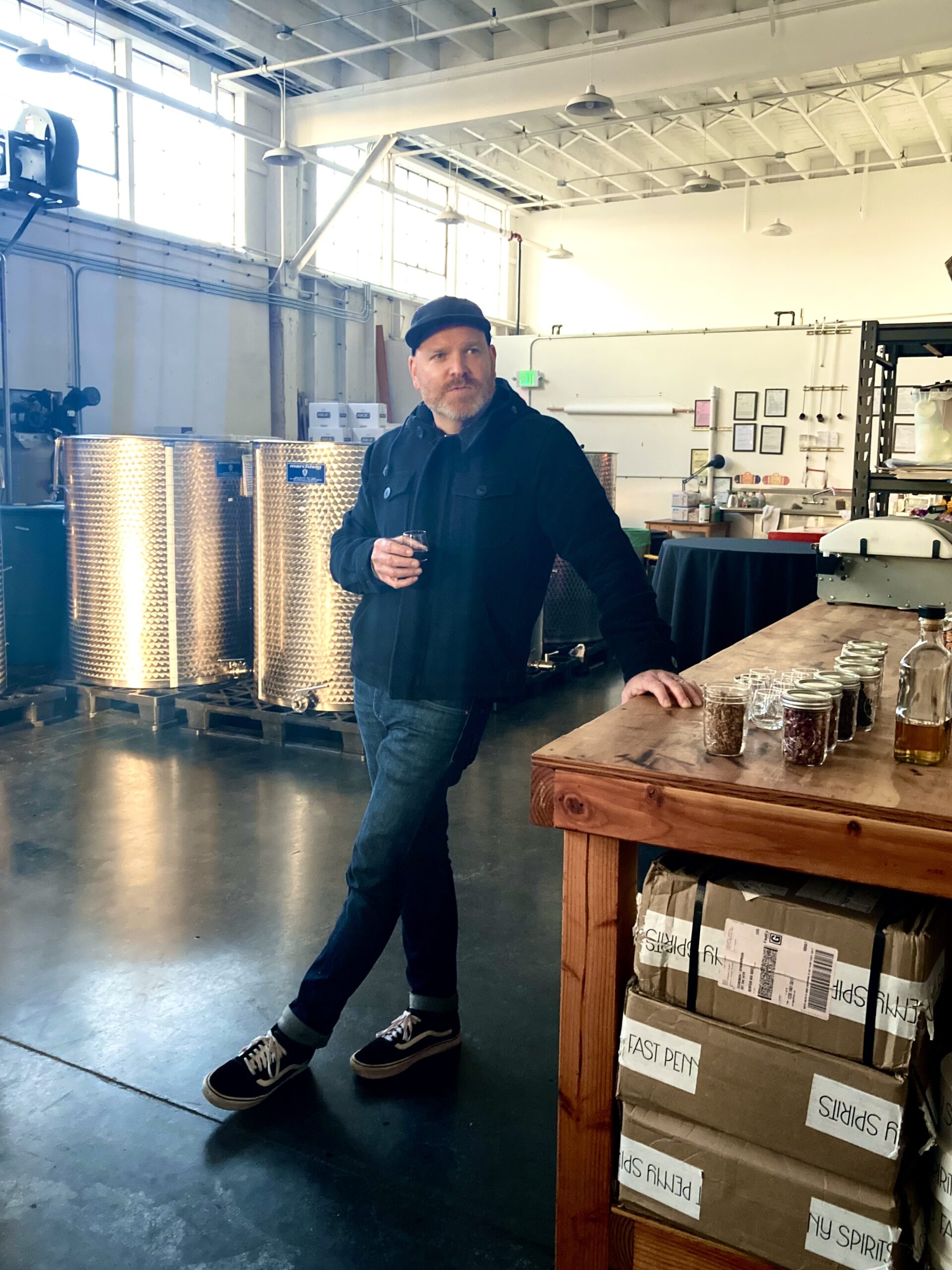

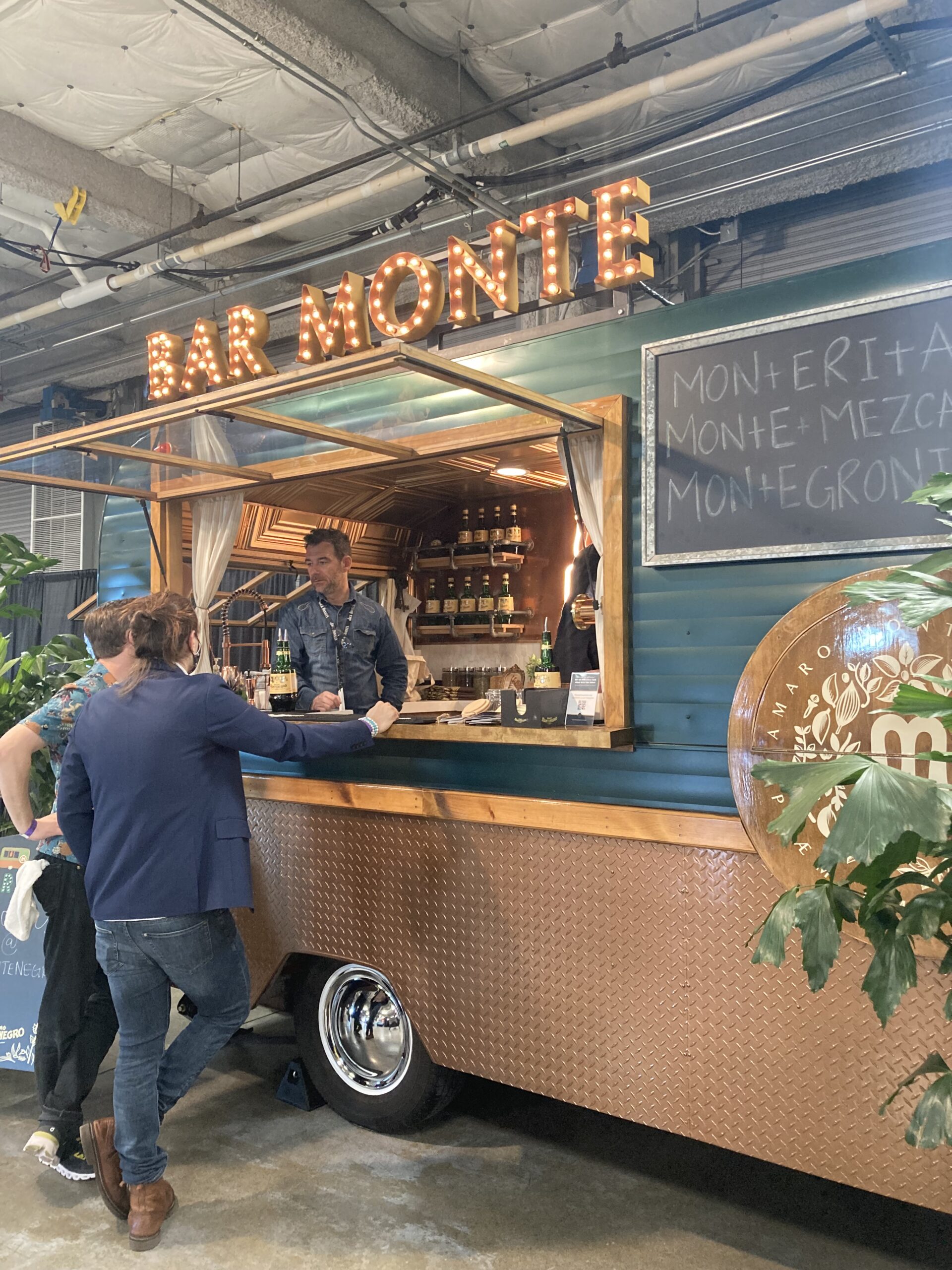
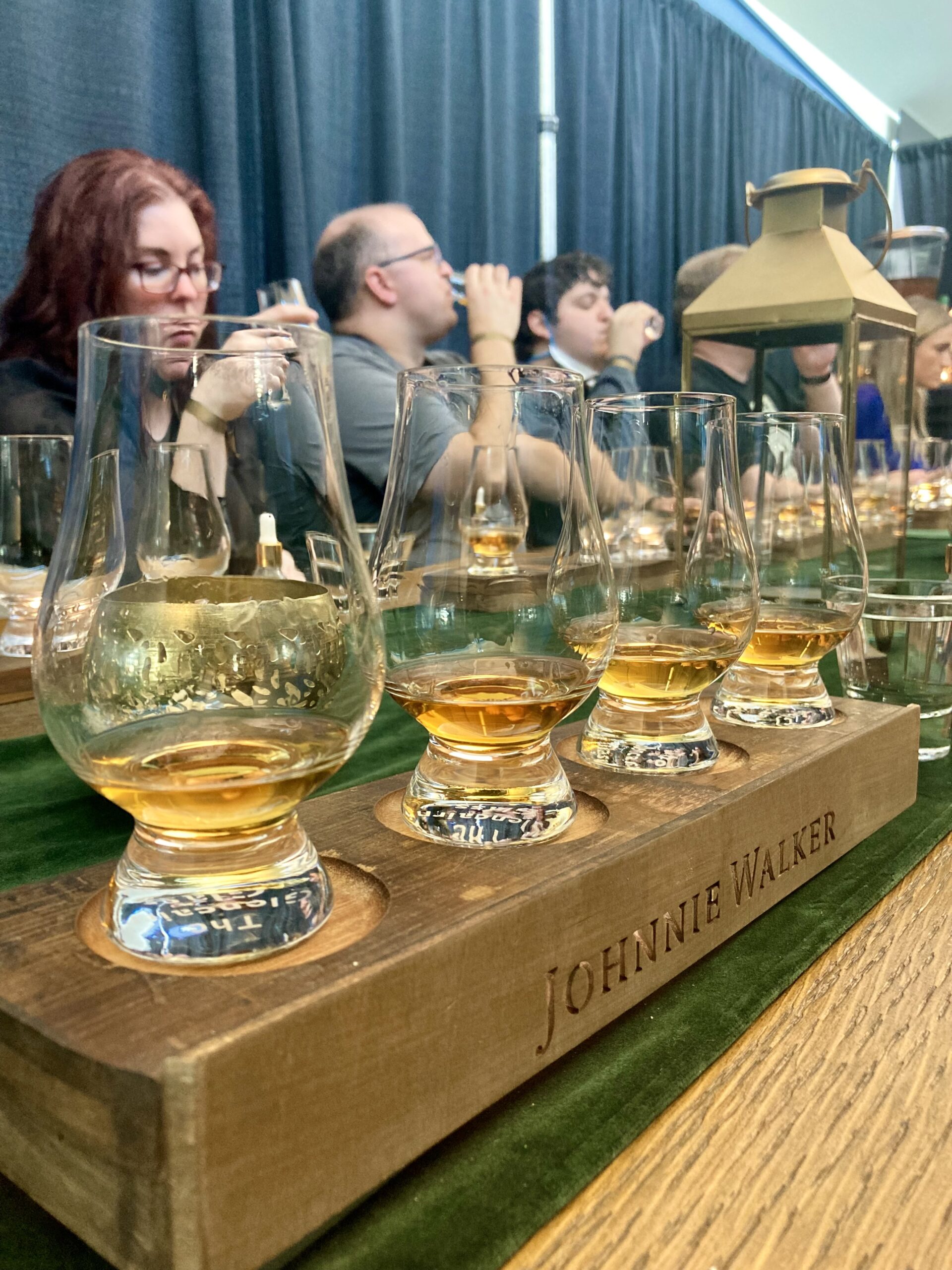





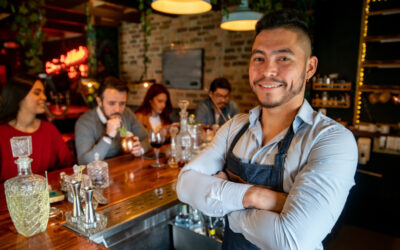






0 Comments